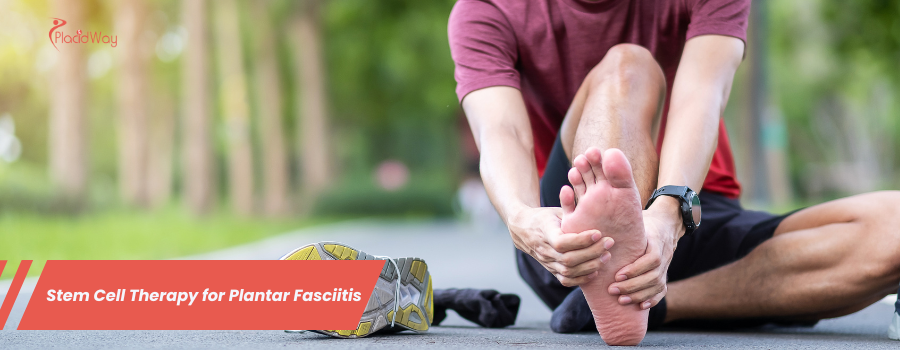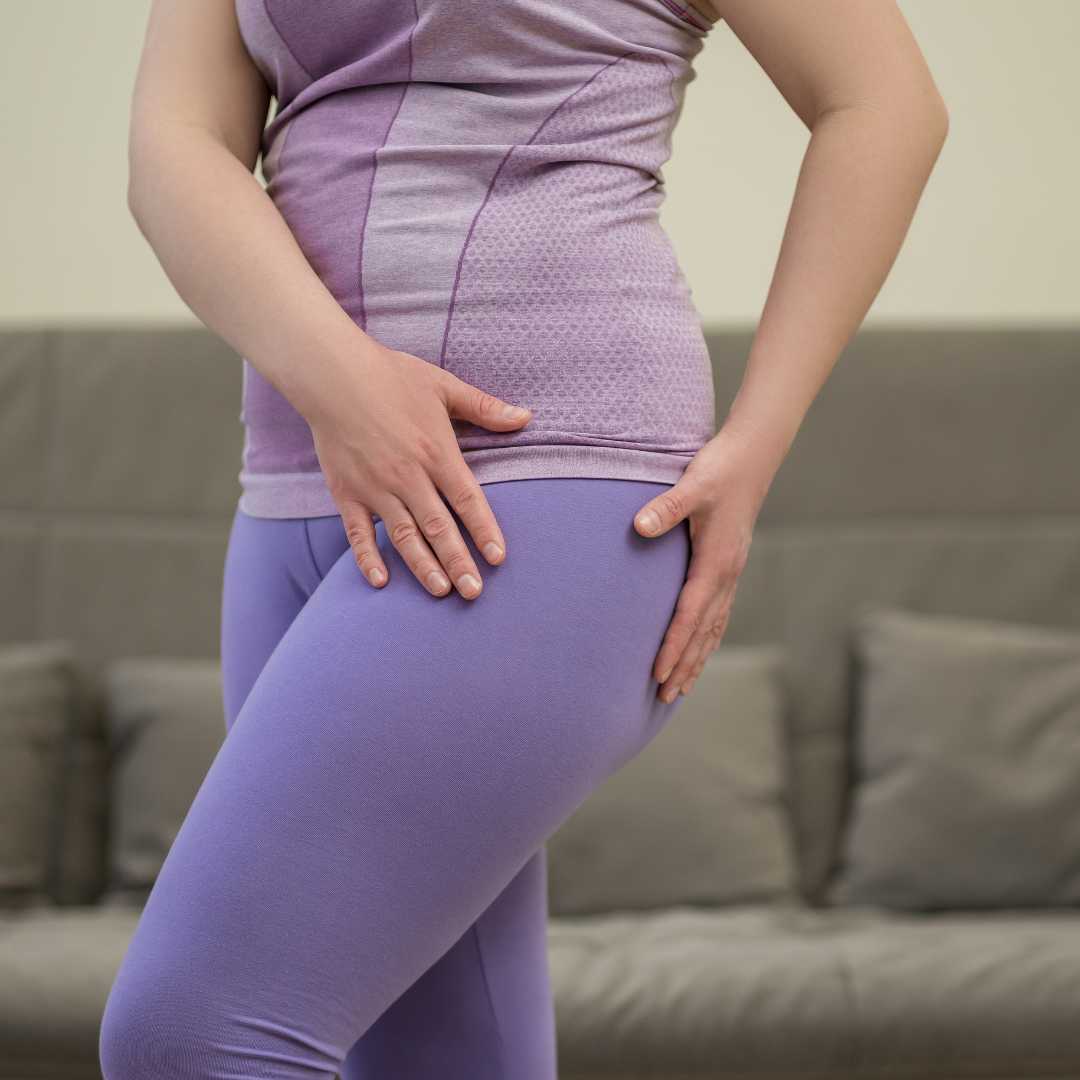
Walk Pain-Free Again - Is Stem Cell Therapy the Answer to Your Plantar Fasciitis?
That sharp, stabbing pain in your heel with your first steps out of bed. The ache that returns after sitting for too long or standing all day. If this sounds familiar, you're likely one of the millions struggling with plantar fasciitis. This relentless condition can make everyday activities feel like a marathon.
You've probably tried it all: stretching, icing, expensive orthotics, night splints, and maybe even painful cortisone shots. While these can offer temporary relief, they often fail to fix the underlying problem—the damaged and degenerated tissue in your plantar fascia.
But what if there was a way to help your body actually heal the tissue itself? This is the goal of stem cell therapy. It’s a groundbreaking field of regenerative medicine that uses your body's natural "repair crew" to target the injury, reduce inflammation, and rebuild healthy tissue. It's not a temporary fix; it's a solution aimed at lasting recovery. For many, this advanced treatment is either too expensive or not yet widely available at home, which is why thousands are turning to medical tourism for an affordable, high-quality solution.
What are the symptoms and causes of plantar fasciitis?
The hallmark symptom is pain at the bottom of the heel, which can feel like a stone bruise or a sharp pinprick. This pain is most intense:
- With the very first steps after waking up.
- After long periods of standing or sitting.
- When climbing stairs.
- After, not usually during, exercise.
This condition is fundamentally a repetitive strain injury. The plantar fascia, which acts like a shock-absorbing bowstring for your arch, gets over-stressed. Tiny tears develop, leading to inflammation (fasciitis) and, more accurately in chronic cases, a breakdown of the tissue (fasciosis). Common culprits include:
- Activity: Sudden increases in running or walking, or jobs that keep you on your feet all day.
- Foot Mechanics: Having flat feet (overpronation) or very high arches.
- Weight: Being overweight or obese puts extra stress on the fascia.
- Other Factors: Tight calf muscles, unsupportive footwear, and age.
How does stem cell therapy work for heel pain?
Think of stem cells as your body's blank slates or master repair cells. They have two amazing abilities: they can self-renew (make more stem cells) and they can differentiate (turn into other types of specialized cells, like tissue, ligament, or cartilage).
When injected into the damaged plantar fascia, these cells get to work immediately. They act like a general contractor at a construction site, orchestrating the entire healing process. They release powerful anti-inflammatory proteins, send out signals to recruit other healing cells to the area, and can even transform into new fascia cells to replace the damaged ones. This is a level of healing that a cortisone shot, which just masks inflammation, cannot achieve.
Am I a good candidate for this treatment?
This therapy is typically reserved for those with chronic plantar fasciitis. If you just developed heel pain last week, your doctor will recommend conservative treatments first. However, if you fit this profile, stem cell therapy might be your best next step:
- Your heel pain has lasted for six months or more.
- You've diligently tried physical therapy, stretching, and orthotics without success.
- Multiple cortisone injections have provided only temporary relief or no longer work.
- An MRI or ultrasound confirms thickening or tearing of your plantar fascia.
- You want to avoid the risks and long recovery of surgery.
A consultation with a regenerative medicine specialist, either at home or abroad, will involve a review of your medical history and imaging to confirm if you are an ideal candidate.
What are the different types of stem cell therapy used?
Understanding the source of the stem cells is important, as each has its benefits.
- Autologous (Your Own Cells):
- Adipose-Derived: These stem cells are harvested from your own fat tissue through a simple "mini-liposuction" procedure, usually from the abdomen. Fat is an incredibly rich source of mesenchymal stem cells (MSCs) and is easy to access.
- Bone Marrow Aspirate Concentrate (BMAC): These cells are taken from your own bone marrow, typically from the back of your hip (iliac crest). The sample is spun in a centrifuge to concentrate the stem cells before injection.
- Allogeneic (Donor Cells):
- Umbilical Cord-Derived (UC-MSCs): These are highly potent, young stem cells collected from the umbilical cord tissue of healthy, screened newborns after birth. They are considered "immunoprivileged," meaning they have a very low risk of rejection, and require no harvesting procedure for the patient.
The type recommended by your international clinic will depend on their specialty, your specific condition, your age (cell potency can decrease with age), and local regulations.
Why travel abroad for stem cell therapy for plantar fasciitis?
This is a key question for many patients. The reality is that in many Western countries, particularly the US, stem cell therapies are often classified as "experimental" by insurance companies and are not covered. This leaves patients with a hefty out-of-pocket bill.
Medical tourism destinations have become global centers for regenerative medicine, offering identical (and sometimes more advanced) treatments at a fraction of the cost. You get:
- Affordability: Pay $2,000 instead of $8,000 for the exact same procedure.
- Access: Gain access to treatments, like umbilical cord-derived stem cells, which may face stricter regulations in your home country.
- Expertise: Many international clinics focus exclusively on regenerative medicine, giving them a high level of experience.
- No Wait Times: You can schedule your procedure quickly, without waiting months for an appointment.
Is stem cell therapy for plantar fasciitis considered safe?
Safety is a top concern, and rightfully so. The stem cell procedure for plantar fasciitis is minimally invasive. It's an injection, not a surgery. When using your own cells (autologous), you eliminate the risk of rejection or disease transmission. The main risks are the same as any needle injection: minor pain at the injection site, temporary swelling, or a very small risk of infection, all of which are managed by your medical team.
When using donor (allogeneic) cells, reputable international clinics follow strict protocols. The cells are sourced from accredited tissue banks, rigorously screened for diseases, and processed in certified labs. PlacidWay partners exclusively with clinics that meet or exceed these high safety standards.
What is the recovery like after the procedure?
This is one of the biggest advantages over surgery. The procedure itself is often done in under an hour. Afterward:
- Weeks 1-2: You'll likely be in a walking boot to offload the heel. This is crucial for protecting the newly injected cells. You can walk, but you'll be asked to rest and elevate your foot as much as possible.
- Weeks 2-4: You may transition back to supportive shoes and begin gentle stretching.
- Weeks 4-6+: You can gradually reintroduce low-impact activities like swimming or cycling. Running and jumping are usually the last things to be re-introduced, often around the 8-12 week mark, depending on your progress.
The key is patience. The stem cells are healing the tissue from the inside out, and this process takes time. Most patients report noticeable improvements starting around 4-6 weeks, with continued healing for 3-6 months.
How much does stem cell therapy for plantar fasciitis cost worldwide?
The price difference can be staggering, and it's rarely due to a difference in quality. The costs in medical tourism hubs are lower because of a lower cost of living, reduced administrative overhead, and the fact that prices aren't inflated by complex insurance systems. Here is a general comparison:
Disclaimer: These are estimates. The final cost depends on the clinic, the type of stem cells used (autologous vs. allogeneic), and the specifics of your case.
What are the best countries for stem cell therapy?
While many countries offer treatments, a few stand out as leaders in regenerative medicine for medical tourists:
- Mexico: Its proximity to North America makes it a convenient choice. Clinics in cities like Tijuana, Cancun, and Guadalajara are highly experienced and often more affordable.
- Colombia: Medellin and Bogota have become world-class centers for regenerative medicine, known for high-quality care at very competitive prices.
- Thailand: Renowned for its JCI-accredited hospitals and exceptional patient service, Thailand combines top-tier medical care with a perfect environment for a healing vacation.
- Germany: For those prioritizing strict European regulations, Germany offers cutting-edge treatments, though at a higher price point than Latin America or Asia.
How do I choose a reputable international clinic?
This is the most important step in your medical tourism journey. Vetting a clinic from thousands of miles away can be daunting. Here's what to look for:
- Accreditation: Is the hospital or clinic accredited by an international body like the Joint Commission International (JCI)?
- Doctor Credentials: Look up the doctor. Where did they train? Are they board-certified? How many of these specific procedures have they performed?
- Transparency: The clinic should be open and clear. Ask them: What type of stem cells do you use? How many cells will I receive? Where are the cells processed?
- Patient Reviews: Look for video testimonials and detailed reviews from past patients who had the same procedure.
This is where PlacidWay provides immense value. We have already done this vetting process for you, connecting you only with clinics and doctors who meet our strict standards for safety, quality, and patient care.
What does a medical tourism package typically include?
A good medical tourism package is designed to be all-inclusive, so you can focus on your health. While packages vary, a typical offering will bundle:
- The procedure itself (cell harvesting, processing, and injection).
- All doctor and anesthesiologist fees.
- All clinic and operating room costs.
- Pre-procedure consultation and post-procedure follow-up.
- Airport-hotel-clinic transfers.
- A dedicated case manager or patient coordinator.
Many partners, including PlacidWay, can also assist with booking flights and accommodations, often at partner hotels that are set up for recovering patients. This takes the stress and guesswork out of planning your trip.
What are the long-term results of stem cell therapy for heel pain?
This is the ultimate goal: lasting relief. Unlike cortisone, which wears off, stem cell therapy aims to create a permanent structural repair. Clinical studies following patients for several years after treatment have shown high rates of success. Most patients report a significant reduction in pain, improved function, and a return to activities they had given up.
It's important to have realistic expectations. The healing is gradual over several months. Success also depends on your commitment to the recovery protocol (like wearing the boot) and addressing the root causes of your plantar fasciitis (like stretching tight calf muscles or getting supportive footwear). The goal is to heal the fascia so it can once again withstand the daily stresses of walking, running, and living.
Take the Next Step with PlacidWay
Ready to walk away from heel pain for good? Your journey to a pain-free life is just a click away. Explore top-rated international clinics, compare prices, and get a free, personalized quote for your stem cell therapy with PlacidWay. Let us help you plan a seamless and rejuvenating medical travel experience. Start your transformation today!
Stem Cell Therapy Abroad





.png)
.png)



Share this listing